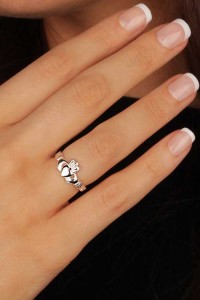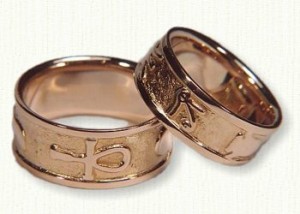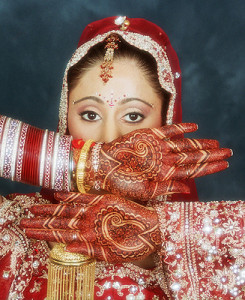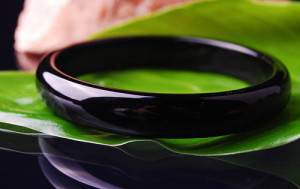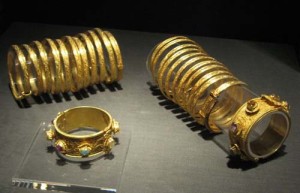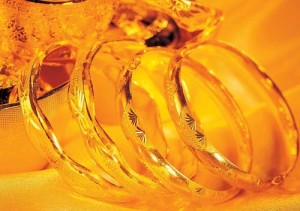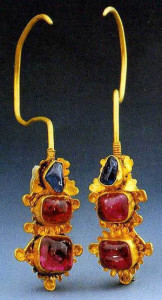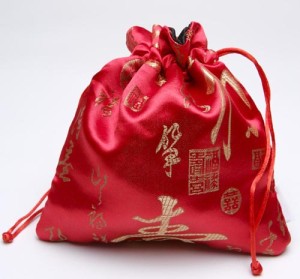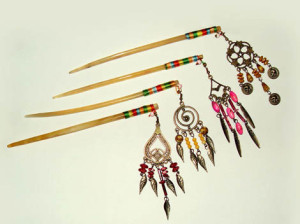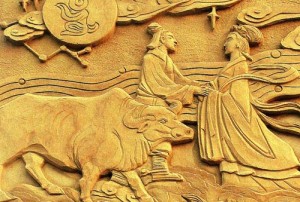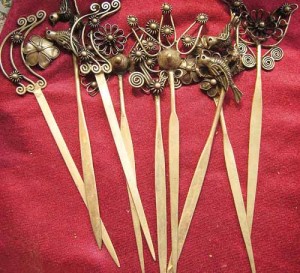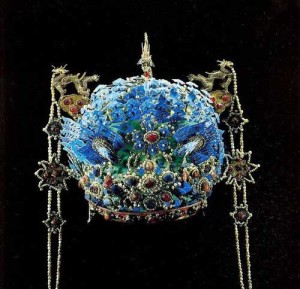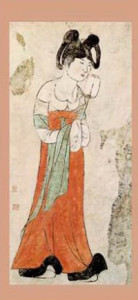Good afternoon everyone! I hope you survived another long Monday. Things have been crazy for me since I started my new job. So many things to learn, people to meet, and nuances to pick up on. As I met with one of our marketing managers yesterday, I couldn’t help but notice the GIANT ROCK on her finger! Rings are something women almost always notice right away. I’m not sure if it’s because we get distracted by shiny objects or because we are attracted to the elevated status signified by large diamonds.
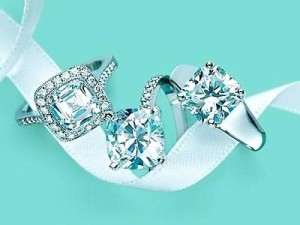
Everyone knows that Tiffany teal!
So the marketing manager’s ring got me thinking about engagement rings and what they stand for: BACK OFF, I’M TAKEN! Engagement rings are necessary in most, if not all, American relationships to materially state baby I’m yours, and no one else’s. It’s the first step towards every marriage, a matter of obsession for women, and fear for men. Years ago during a visit to Manhattan, I indulged my materialistic girly side and took a stroll through Tiffany’s on fifth avenue.
I actually witnessed a man working out finance options for a $60,000 engagement ring. Yes, four zeros. Ladies, is it really so important that you have the biggest ring? That’s a down payment on a house! Maybe I’ve become overly practical in my old age (read: mid-twenties), but I’d prefer a down payment over a Tiffany’s ring.
Rings signify more than just status and pre-marital suffering; they symbolize commitment. When I was in second grade, my little boyfriend Billy gave me one of those cheapy metal rings you get from a quarter machine. In fourth grade, a boy stole his sister’s high school ring and asked me to be his girlfriend. When I got older, I bought a fakie engagement ring from Avon to wear out so guys would leave me alone. My point is not that I’m just too hot to handle, but that from a very young age children are trained to associate rings with relationships and by the time we reach adulthood, we know that a ring on the left hand is a big red stop sign.
But why rings? I’m sure a few hours of internet research could answer this, but I decided to take my search in another direction – if Americans are obsessed with diamond engagement rings to express commitment, how do other cultures do it? Here’s what I found:
Polynesian Culture
In modern Polynesian culture, the frangipani (plumeria) can be worn by women to indicate their relationship status – over the right ear if seeking a relationship, and over the left if taken.
Irish Culture
Becoming a trend for both Irish and non-Irish descendants, Claddah rings signify relationship status based on the way they are worn. “The elements of this symbol are often said to correspond to the qualities of love (the heart), friendship (the hands), and loyalty (the crown)” [1]. If worn on the hand with the heart facing away from the body, the wearer’s heart is open and available. If worn with the heart facing the body, the wearer’s heart is closed and therefore unavailable.
Egyptian Culture
While traditional Egyptian weddings also use wedding rings, they believe the ring finger has a “vein amoris,” the vein of love, which runs straight to the heart. Kind of makes me feel shallow. We want giant engagement rings so other women will be jealous or to make our partners prove their love monetarily. At least Egyptians have a romantic explanation for exchanging rings.
Indian Culture (others too!)
While American brides show off their bling to show commitment, Indian brides (and brides of 60+ other cultures) are adorned with beautiful henna patterns in dark colors to symbolize love and the strength of their upcoming marriage. This is great because it is accessible to both rich and poor, allowing those who couldn’t drape the bride in riches to still present her beautifully. The deeper the hue of the ink, the stronger the love of her husband.
Chinese Culture
Ooooh… Chinese brides get ten engagement gifts! Much like the importance placed on engagement rings, Chinese society dictates that these gifts must be exchanged before a formal engagement. However, these gifts must be given in secrecy. Also, some of the historic reasons behind these gifts are a little disturbing.
Bracelets are said to have been made for the love of beauty. “Some historians say that since men assumed absolute rule in economic life, they cultivated the barbarian customs to tie down women with finger rings and bracelets” [2]. Hmmmm…. I’d like to leave this fact in the past.
Giant bracelets. I shudder when I extend the previous statement to the size of these babies.
Historically, Chinese women never wore rings unless married.
Li Liweng, a scholar of early Qing Dynasty, said “one hairpin and earrings would accompany women all her life,” much like her mate in marriage [3].
Satchels are considered personal belongings, so the exchanging of them is a very intimate act.
Jade represents honor and love.
According to myth, knots symbolize chastity and purity tying together the hearts of the couple.
Men loved to give hairpins as gifts to women, women usually took the gesture as a sign of love, and lots of hearts were broken. However, these hairpins, fashioned after those from the Ming and Qing dynasty, are also given as a token of love before an engagement.
Twin hairpins are ornaments used to express love. Much like a woman throwing her scarf to a man for him to remember her by, “When lovers or couples parted in the old days, the women would pick up twin-hairpins from the hair, presenting one to her lover or husband while keeping the other with herself, till they were reunited” [4]. This reminds me of the grown-up version of those best friend charms that come in two pieces.
Finally, the man would give the woman a skirt. Jewelry, hair accessories, perfume, AND clothes? Yes, please. Silk skirts are given because they are historically fine and romantic.
So there you have it. Commitment gifts and signifiers are extant all over the world ranging in size and cost. How do you think American men would react if all women were to adopt Chinese culture and expect ten gifts!? They might not think the Tiffany’s financial plan isn’t so bad. However, it is beautiful to read about the significance behind some of these gifts.
Thanks for stopping by and practice some Aloha today! Mahalo!



